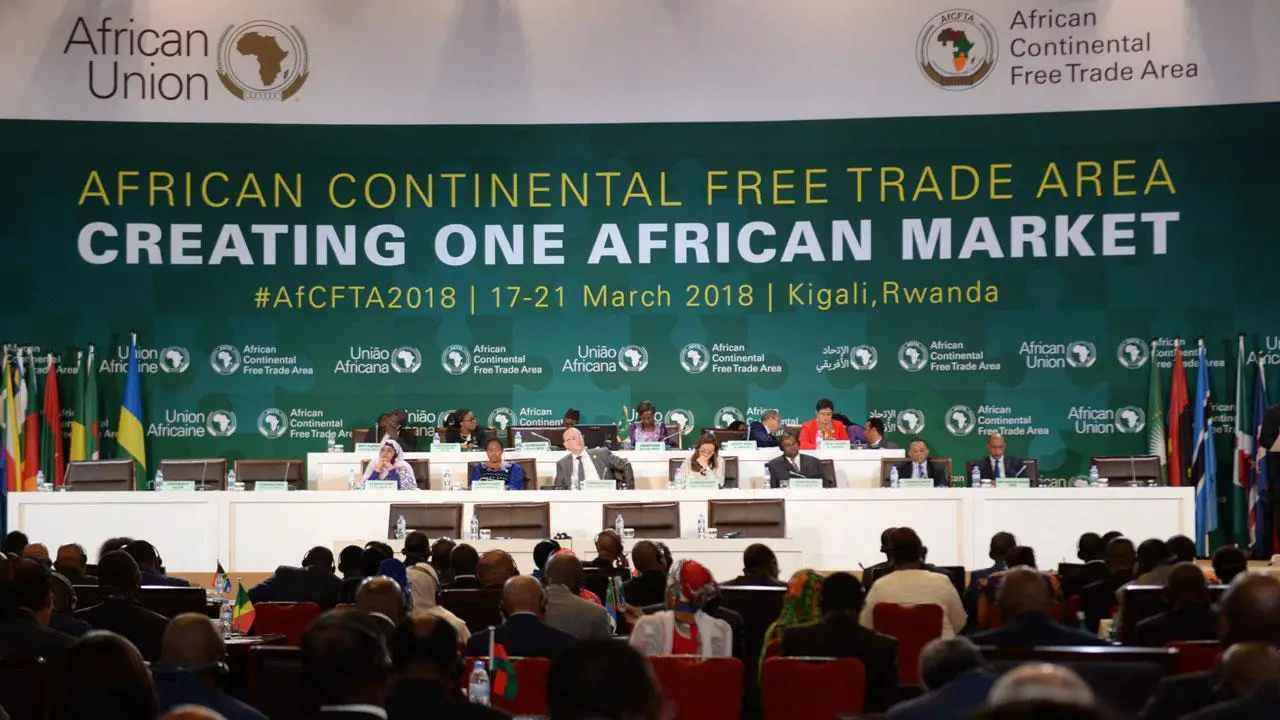- Africa’s New Tripartite Free Commerce Space
- The commerce deal is about to get rid of tariffs on 100 per cent of products, stimulating financial progress, industrialisation, and sustainable growth.
- Regional officers consider that the TFTA may speed up this development by additional stimulating intra-regional commerce.
Commerce facilitators and specialists in Africa have cautiously welcomed the not too long ago signed Tripartite Free Commerce Space (TFTA) that brings collectively three buying and selling blocs in East and Southern Africa, saying it is meaningless with out a safety protocol.
Based on specialists from TradeMark East Africa and East Africa Enterprise Group (EABC), though the inter-regional deal that got here into drive on July 25 has an Annex on cooperation on customs commerce issues and basic infrastructure, there’s none on safety.
In an announcement, the commerce facilitators mentioned a safety pact would improve different integration points by erasing present suspicion amongst some member states.
“There are sturdy connections between safety and commerce so, sooner or later, TFTA members want to boost a protocol on safety whose implementation will probably be troublesome contemplating the big membership.” “Regardless of the hardles, we stay optimistic that the deal will obtain desired goals.”

Creck Buyonge Mirito, a global customs and worldwide commerce coverage, reform, and modernisation knowledgeable says that attempting to make sure that the 26 nations anticipated within the TFTA are studying from the identical handbook is a tall order – however it may possibly and should be accomplished if safety issues are addressed.
Learn Additionally: AfCFTA’s promise liberating Africa from the chains of uncooked materials export
In his report dubbed ‘Prospects for Africa’s Tripartite Free Commerce Settlement within the Gentle of classes acquired from the East African Group’, Mirito says countering the terrorism menace requires cooperation between governments on the bilateral, regional and international ranges.
“Such cooperation contains sharing intelligence, widespread coaching, and capability constructing.” He provides that political problem can also be one other menace to the pact.
Africa’s New Tripartite Free Commerce Space
The pact which has been within the works since 2015 brings collectively three of Africa’s main regional financial gamers—theCommon Marketplace for Japanese and Southern Africa (Comesa), the Southern African Improvement Group (SADC), and the East African Group (EAC).
Primarily based on three fundamental pillars of market integration together with commerce liberalisation, infrastructure growth and industrial growth seeks to enhance commerce throughout the continent which is at present at a paltry 20 per cent.
The commerce deal is about to get rid of tariffs on 100 per cent of products, stimulating financial progress, industrialisation, and sustainable growth.
It’s going to fast-track a free commerce space and preparations for the motion of businesspersons; give attention to enhancing connectivity and lowering enterprise prices; and create a supportive setting by bettering regulatory and authorized frameworks.
It intends so as to add worth, diversify industries, improve productiveness and competitiveness, and implement packages for structural change.
Over the previous couple of years, a number of initiatives to harness intra-regional commerce have been undertaken by the three regional financial communities that at the moment are merging to type the TFTA.
The launch of the TFTA was the height of a course of that began in 2008 with the primary summit held in Kampala, Uganda.
Final Thursday, Angola got here on board, resulting in the much-needed ratification by 14 members. The settlement shall stay open for attainment by different member states of the African Union.
The 26 nations have a mixed inhabitants of 632 million individuals or 57 per cent of Africa’s inhabitants, and a gross home product of $1.3 trillion (Sh169 trillion).
Over that interval, the overall exports share of intra-regional commerce has elevated from seven p.c to 25 per cent.

Whereas these shares are low in comparison with European nations (70 per cent) or Asian (50 per cent) requirements, the development, in keeping with Trademark present that commerce among the many tripartite members nations grew sooner in comparison with commerce relations with the remainder of the world.
Regional secretariats consider that the TFTA may stimulate this development by additional acelerating intra-regional commerce.
The pact is taken into account by regional policymakers and a few analysts to be an important deal and a possible recreation changer for the African buying and selling system and the greater than half a billion residents of the member nations.
“Certainly, the pact is predicted to be the launching base for the institution of a extra strategic Continental Free Commerce Space that’s anticipated to cowl all of African nations,” Brookings says in its newest evaluation of the pact.
Based on the report, the approaching into drive has demonstrated the potential of a collective motion amongst 26 very heterogeneous nations with GDP per capita starting from $16,000 (Sh2.08 million) to $270 (Sh35,100) and reveals the feasibility of harmonising three very totally different preferential commerce regimes into one unified scheme.
Learn Additionally: AfCTA Presents Golden Alternative for Africa to Commerce Equally with MNCs